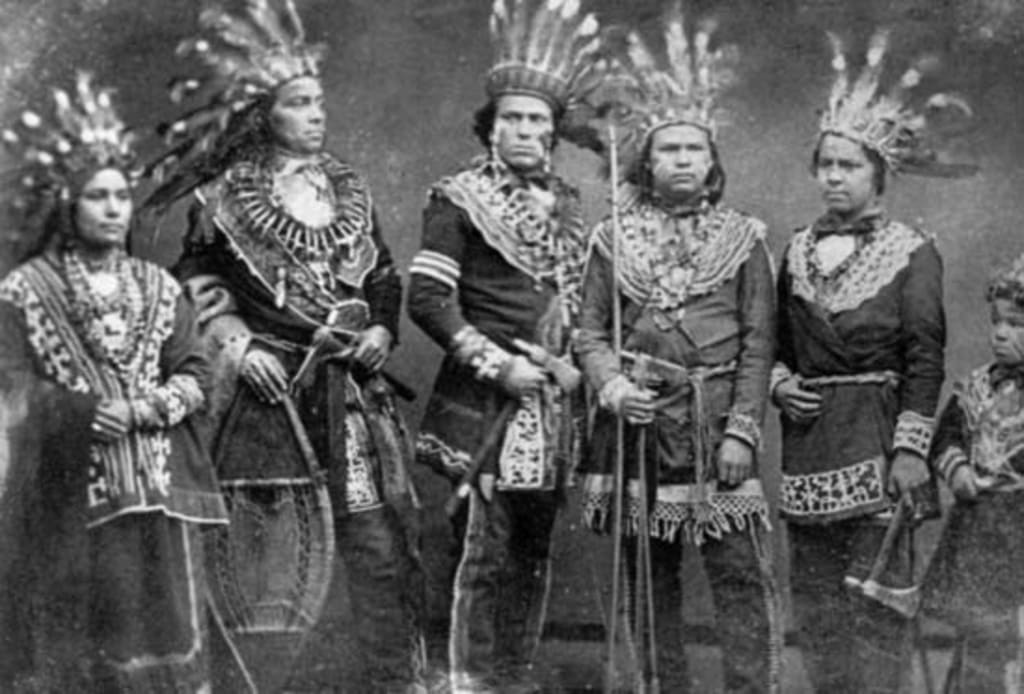Is Animism a Religion?
I recently sat with head bowed as a man prayed to his ancestors' spirits in Indonesia, but I'm not sure if mine were included as we drank sopi, a home brew spirit

Is animism a religion? It could be. I'd heard of pantheism and a many other belief systems (including MAGA). Never mock a man's religion, just respect his right to have a religion.
Well, that's one way of looking at it.
Yet even today we have Sunnis and Shias killing each other over interpretation of the Quoran. History is littered with wars such as those caused by the historical split between Catholics and Anglicans although they have the same religious roots. Hindus ans Sikhs, Hindus and Muslims. The list is painful.
So, what's wrong with praying to one's ancestors for protection? We certainly know that our ancestors existed. But does God?
Don't answer that now.
As a boy, I was sent to a grey and gloomy Welsh chapel every Sunday afternoon, so I know bit about religion although I'm now an atheist.

Animism
Animism is a religion that is widely practiced in Indonesia and many other parts of the world. It is based on the belief that everything in the world has a spirit or a soul, including animals, plants, rocks, and even inanimate objects like houses and tools. Animists believe that these spirits are connected and that they can communicate with them through rituals, prayers, and offerings.
In Indonesia, animism is often blended with other religions, such as Buddhism and Hinduism. This syncretism (great word) has resulted in a unique and diverse spiritual landscape in the country, with many different deities and spirits being worshipped.
Animism coexists alongside Catholicism, Islamism and Protestantism. A small town here may have half a dozen mosques, with as many churches. And Bali is a centre of Hinduism.
One of the most prominent animist traditions in Indonesia is the belief in the power of ancestor spirits. Many Indonesians believe that the spirits of their ancestors continue to live on after death and can be called upon for guidance and protection. These spirits are often honored through rituals and offerings, such as the construction of small shrines or the offering of food and flowers.
And other spirits. In my limited experience they also involve drinking sopi, which is made from fermented palm wine, 45% alcohol by volume. Home brew.
Nothing wrong with that. There are plenty of people around the world whose religion is football and they get mindlessly pissed every week, praying fervently that their side will win. And fighting with opposition supporters…
Palm wine is a traditional beverage that is made from the sap of the coconut palm or other types of palm trees. It is typically fermented and has a slightly sweet and sour taste.
There are many different ways to prepare sopi, and the specific ingredients and method of preparation can vary from region to region. Some common ingredients that may be used in sopi include sugar, spices, and fruit.
Sopi is often enjoyed as a refreshing drink and is often served at social gatherings and celebrations. It is also sometimes used in traditional medicine and is believed to have various health benefits. I'll go with that. It makes me happy.
The stuff that I drank just tasted of alcohol.
Christians have wine. Animists have spirits.
Aspects of animism
Another important aspect of animism in Indonesia is the belief in the power of nature. Many animists in the country believe that the spirits of the forest, the mountains, and the rivers are all around them and that they must be treated with respect and reverence.
This belief is often reflected in the conservation efforts and environmental protection practices of animist communities in Indonesia, although far too many people seem to be intent on dumping vast amounts of plastic waste into the sea.
I watched two guys throw six empty oil cans off their boat into the sea, yards off the beach. You can see two of the red cans in the picture.

I was told that people in Indonesia believe that the sea will purify everything for them. That took me back to Tenby in Wales where I lived for a while too may years ago. Right next to the harbour is a house with an inscription carved over the door:
η θάλασσα ξεπλένει όλα τα δεινά
Yes, the sea washes away all ills. In Greek.
But when you are looking at the garbage in the sea in Indonesia and its dangerously fouling your motor's propeller then it's hard to be understanding of that concept.
Indonesian Yggdrasil
The yggdrasil, also known as the "world tree," is a symbol of animism that is particularly associated with Scandinavian mythology. It is believed by some to be a bridge between the different worlds of the spirits and is often depicted as a central pillar in animist rituals and ceremonies.

In Indonesia, there are also traditions surrounding sacred trees and their role in animist belief and practice. One such tree is the "pohon kehidupan," or "tree of life." This tree is believed to be a source of life and vitality, and is often revered as a symbol of the interconnectedness of all things in the world.
Despite the diversity of animist beliefs and practices in Indonesia, there is a common thread that runs through all of them: a deep respect for nature and the spirits that inhabit it. Animism is a religion that encourages its practitioners to live in harmony with the natural world and to recognize that interconnectedness.
As animism continues to thrive in Indonesia and around the world, it serves as a reminder to some of the importance of preserving the natural world. I wonder if Greta Thunberg is an animist?
I'm not sure if my prayers will be answered, but I do wish that education could stretch to teaching people to reduce the dumping of plastic waste into the sea.
Animism versus paganism
I wondered about this and this is what I discovered (we didn't cover it in my Welsh chapel Sunday school lessons):
Animism is the belief that spirits or deities inhabit natural objects and phenomena.
Paganism, on the other hand, is a broad term that refers to a variety of religious and spiritual practices that are not part of the major world religions (such as Christianity, Islam, Hinduism, etc.). This can include animism, as well as other belief systems such as pantheism (the belief that everything in the universe is divine), polytheism (the belief in many gods), and nature-based spiritualities.
In general, animism is a specific belief system within the broader umbrella of paganism. However, not all pagans practice animism, and not all animists consider themselves to be pagans.
Animism as a concept
Animism as a scholarly concept has gone through some evolution and I thought I'd look at some of the definitions.
Animism focuses on the metaphysical universe, with a specific focus on the concept of the immaterial soul.
New animism emerged largely from the publications of anthropologist Irving Hallowell, produced on the basis of his ethnographic research among the Ojibwe communities of Canada in the mid-20th century.
I gave up at that point as it became clear that people were building careers on the different ways of defining animism and having arguments about those definitions. Let's hope that it doesn't come to war.
After the prayers
Back in Indonesia, after praying with the Lord of the Village in his very modest home and drinking sopi, we paid for the drink (a form of visitor tax, I think) and were granted permission to enter the village and visit the local 'shrine' which is a boat constructed of stone blocks. It is 500 years old and was built by five families who founded the village. Their names are carved in the stones. The boat is revered by the local people. Only the ancestors of the founding families are allowed to sit in it.

It reminded me of boats we had seen in the Pacific Islands and New Zealand where some boats were considered to be holy and we were not allowed to touch them. They floated and were regularly used.
But the Stone Boat on the island of Yamdena in Indonesia is 18 metres long, sitting where it was first built, on a piece of land 220 steps above the beach.
It's never going anywhere. And right next to the site was a Protestant church where a choir was rehearsing.
Such is syncretism.
At least they live in harmony.
One more thing - I was told that it was possible to be an animist and go to church.
Good idea. Hedge your bets, as Blaise Pascal recommended.
And yes, I guess animism qualifies as a religion - it's certainly no stranger than any of the other offerings.
About the Creator
James Marinero
I live on a boat and write as I sail slowly around the world. Follow me for a varied story diet: true stories, humor, tech, AI, travel, geopolitics and more. I also write techno thrillers, with six to my name. More of my stories on Medium






Comments (1)
Great to see you're giving Vocal a try. After getting over 2k external reads on some of my Medium stories and getting ZERO for it I signed up with Vocal. We'll see if it's worth the $9.99 fee. I enjoyed your story. Out of the many topics I've covered on Indonesia I never thought of animism. It should be added to the only (5) religions officially recognized in Indonesia. But it's a belief not a religion? So is Shamanism and the practice of magic - Dukun Santet in East Jawa. Is sopik the same as arak? Did you get your motor repaired?